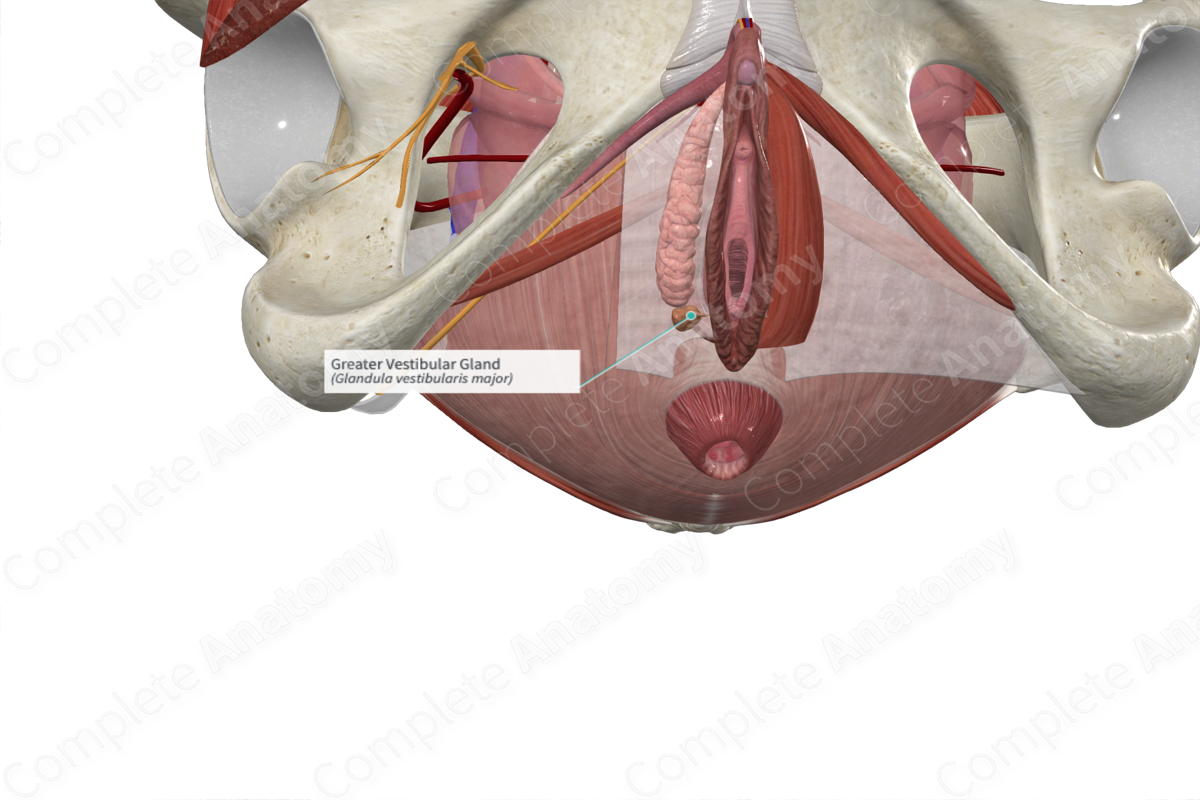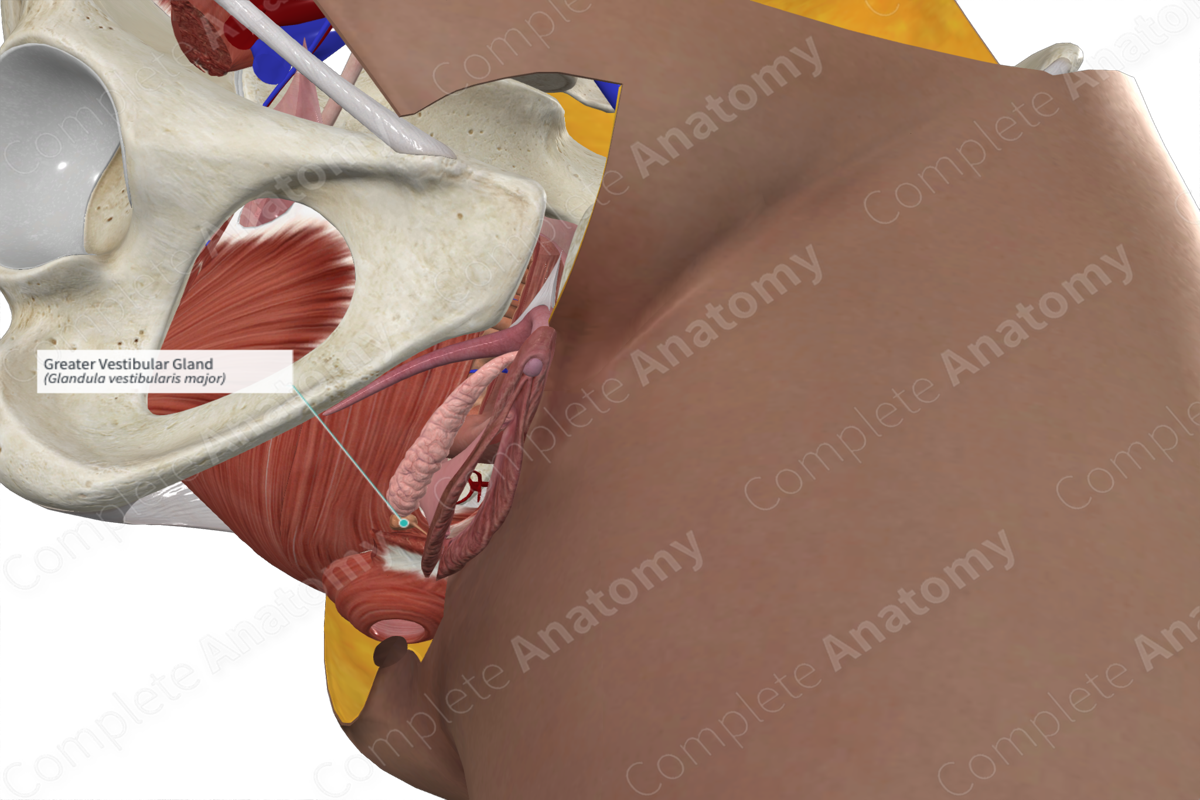
Structure/Morphology
The greater vestibular glands are rounded tubuloacinar glands that open into to the vestibule via a duct, 2 cm long, which lie between the hymen (or hymenal caruncles) and the labia minora (Standring, 2016).
Key Features/Anatomical Relations
The glands are related to the posterolateral aspects of the vaginal orifice. They often sit beneath the posterior aspect of the vestibular bulbs. They are analogous to the bulbourethral glands in the male.
Function
These glands produce mucoid secretions that functions as a lubricant during sexual arousal.
List of Clinical Correlates
—Bartholin’s cyst
References
Standring, S. (2016) Gray's Anatomy: The Anatomical Basis of Clinical Practice. Gray's Anatomy Series 41 edn.: Elsevier Limited.



